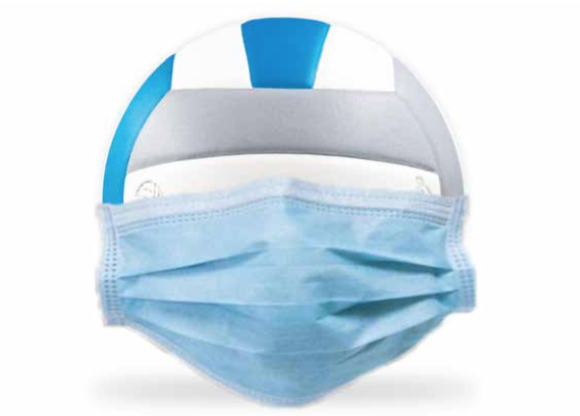
Story by Chace Bryson – Illustration by Mike DeCicco
So it’s time to wait a little longer, it seems.
It’s typically exactly this time of year when SportStars HQ hunkers down to plan the annual Football Preview. It tends to lead into one of the busiest two-week stretches of the year for us here.
Now that two-week stretch will happen in December? That’ll be weird. If we can actually get to that point. As I wrote in the magazine’s initial story on the mass delay of fall sports (which we included in this edition beginning on Page 26), it’s great that CIF and its sections made a sweeping decision to give its schools time and its student-athletes a beacon of hope.
That said, I wonder if the CIF starts reading the tea leaves in October and decides it may need to propose some changes. And if that’s the case, I’m still a bit mystified about how the state decided on when certains sports would be played under the modified schedule.
For one, I feel pretty confident golf could be played now. If the general public can play golf (I created some of my own fairway divots in mid-July), then socially distanced dual meets and tournaments seem doable. Swimming and diving could likely happen now as well. And right there that’s two sports you’ve removed from what has become an incredibly crowded spring under the two-season model.
Before going any further, I understand the difficulty and conflict that comes with providing athletic opportunities when schools can’t provide actual classroom opportunities. But at the same time — provided it’s safe — how great would it be to provide those athletes an outlet following the numbing monotony of distance learning?
But for argument’s sake, let’s say that out of an abundance of caution, we agree to sticking with the full two-season format. Why not push the highest risk sports the furthest out? If risk aversion is the top priority, close-contact sports such as football and water polo should have probably been placed in the spring season to give it the best possible chance of occurring in the safest possible environment.
Meanwhile, outdoor sports like soccer, track, tennis, swimming and golf (since we can’t play them in the ACTUAL fall) could all get played in the December-March timeframe. Yes, putting volleyball and basketball in the same March-June timeframe would definitely create facilities challenges for some schools. However, this sports year was always going to be screwy and difficult to manage no matter how it happened. Why not embrace the chaos and try to give each sport the best chance at actually getting played?
This column isn’t meant to be a condemnation of the CIF’s ultimate plan. I applaud them for trying, and for at least knowing a traditional fall season wouldn’t be feasible. This was just a thinking-out-loud exercise for what the CIF may have to consider in a Plan B scenario.
Because we really want to be covering high school sports again in December. We honestly don’t care which ones.
This column first ran in the August issue of SportStars Magazine. View it along with plenty more local sports coverage at SportStarsMag.com. The magazine has also debuted its own app titled SportStars NOW. Download it for either Apple or Android today.


Yeah…football OF ANY KIND ain’t happening this year.
Unironically, football is more dangerous to young athletes than Covid. Life long debilitating brain damage is a serious risk, unlike the Chinese virus.
“Sports-related injuries make up about 20 percent of all injury-related emergency department visits among children age 6 to 19.2”
“An estimated 12 million individuals between the ages of 5 and 22 years suffer a sportrelated injury annually, which leads to 20 million lost days of school3 and approximately $33 billion in health care costs.”
“In youth basketball, almost 12 percent of girls seen in the emergency department were diagnosed with concussions compared to 7 percent of boys.
In youth soccer, 17 percent of girls seen in the emergency department were diagnosed with a concussion compared to 12 percent of boys.”
Covid is probably safer than many high school sports by many metrics given the extremely low fatality rate for young people. I’ll try to find exact death rate by age of Covid and get back, it’s hard to track down, perhaps because they don’t want people realizing that it really does mostly reap the elderly.
https://aspe.hhs.gov/report/common-sports-injuries-incidence-and-average-charges/injuries-sport
Orange County public health officer resigns in coronavirus controversy
Liberal policy failing miserably and showing
Coronavirus: Orange County reports 565 new cases and 6 new deaths as of Aug. 9. Orange County Register
Just the DATA…Not the Party.
All sports related injuries are an inherent! As a former athlete I suffered multiple injuries & still function very well today. Stop trying to put these kids in a bubble.
Inherent risk*
The only people who should be worried about high school sports are the athletes and their parents. Anyone else worried about it is kinda weird if you ask me.
Amazing how the benefits of youth and high school sports are completely ignored by people like anon. It’s almost as if someone like that never played and therefore has no clue.
Bravo!
Little League games appear to be going along full steam at Baldwin Park, with no overtly visible social distancing measures. Not judging, just saying. Baseball is much more distantly played than football I suppose. It is too bad that 95% of football is lining up against the opposing team and breathing hard into each other’s faces until the whistle blows, or until you actually get to play, which happens sometimes. Who designed this game?
@Anon. I’m not seeing a lot of context for your statistics. Let’s take your first paragraph about sports being responsible for about 20% of youth injury emergency room visits. I take it we’re supposed to react, “oh my God, 20 PERCENT?!?! That’s so high!” But wouldn’t it be just as reasonable to say, “20%? Is that ALL? I thought it would be way higher. What else are kids doing that causes the other 80%?”
Next paragraph: “12 million kids….” Ok, that sounds maybe about right? And I’m guessing way MORE than 12 million kids have drastically improved physical, mental, and spiritual health BECAUSE they play sports. NOT playing sports, or otherwise engaging in regular athletic activity, has long term adverse health effects, too.
The third paragraph at least offers some possible useful information. It wouldn’t surprise me if boys DO have thicker skulls and bouncier brains than girls. But that is just one explanation for the discrepancy. Maybe there is a gender bias among clinicians. Maybe a boy being kinda foggy and not too swift is about what’s expected, where as if a girl exhibits the same signs as a boy than she clearly has brain damage. Or maybe boys have better reflexes for protecting their noggins against flailing limbs and quickly rising floors.
Comparing the risks of Covid 19 to the risks of youth sports injuries is absurd. One is a viral disease with no apparent upside, the other is a wide spread elective activity that has TREMENDOUS upsides. You know what else causes a lot of injuries? Almost every job I’ve ever had. I’m scarred up and my knees are blown out. That was the trade-off for lots of paychecks and a decent life.
I’m not a sports apologist. Sports are mostly dumb, and responsible for a lot of the stupification of America. But it is my view that the benefits of physical fitness and misguided, artificial social community that youth sports offer is a bargain when weighed against the injuries that it causes.